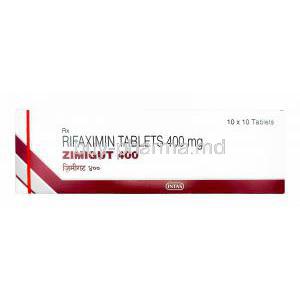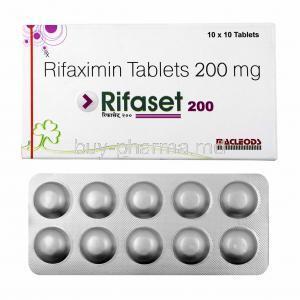Introduction to Heptral (Ademetionine)
1.1 Overview of Heptral (Ademetionine)
Heptral, also known as Ademetionine, is a pharmaceutical compound widely used to support liver function and treat mood disorders. It acts as a precursor to essential biochemical reactions within the body, playing a crucial role in the methylation process, which is fundamental for cellular metabolism.
This medication is prescribed for liver diseases, depression, and conditions linked to impaired detoxification pathways. Its dual nature as a hepatoprotective agent and a mood stabilizer makes it a unique therapeutic option.
1.2 History and Development of Ademetionine
First discovered in the 1950s, Ademetionine was identified as a naturally occurring amino acid derivative critical for metabolic reactions. Over decades, research has unveiled its hepatoprotective and neurotropic properties, leading to its clinical use.
Initially employed for liver diseases, its psychiatric benefits were later recognized, expanding its applications to mood disorders. Modern formulations optimize bioavailability, ensuring effective therapeutic outcomes.
1.3 Role of Heptral in Modern Medicine
Heptral is integral in contemporary medical practice, particularly for conditions where liver function and neurotransmitter balance are impaired. It is utilized for:
- Enhancing liver detoxification mechanisms.
- Supporting patients with intrahepatic cholestasis.
- Improving mood disorders associated with liver dysfunction.
Its role extends to neurodegenerative disorders, inflammatory conditions, and adjunct therapy in hepatic encephalopathy.
Composition and Mechanism of Action
2.1 Active Ingredients in Heptral
The primary active ingredient in Heptral is Ademetionine, a naturally occurring compound involved in transmethylation, transsulfuration, and aminopropylation processes. It facilitates essential biochemical reactions necessary for detoxification and cellular repair.
2.2 How Heptral (Ademetionine) Works in the Body
Heptral exerts its effects by replenishing depleted levels of Ademetionine, which enhances:
- Hepatic cell regeneration.
- Neurotransmitter synthesis, aiding in mood stabilization.
- Glutathione production, a key antioxidant in liver detoxification.
2.3 Pharmacokinetics: Absorption, Distribution, Metabolism, and Excretion
After oral administration, Heptral undergoes partial absorption in the gastrointestinal tract. Bioavailability is enhanced with enteric-coated formulations.
It distributes systemically, crossing the blood-brain barrier to exert neurological effects. Metabolism occurs primarily in the liver, with excretion through urine and bile.
Approved Medical Uses of Heptral (Ademetionine)
3.1 Treatment of Liver Diseases
3.1.1 Hepatic Cirrhosis
Heptral aids in restoring hepatic function in cirrhosis, reducing fibrosis progression and improving detoxification capacity.
3.1.2 Non-Alcoholic Fatty Liver Disease (NAFLD) and Non-Alcoholic Steatohepatitis (NASH)
By enhancing lipid metabolism and reducing oxidative stress, Heptral is beneficial in NAFLD and NASH management.
3.1.3 Alcoholic Liver Disease
Heptral mitigates alcohol-induced hepatic damage by promoting hepatocyte regeneration and reducing inflammation.
3.1.4 Cholestatic Liver Disease (Including Intrahepatic Cholestasis)
Heptral alleviates cholestasis by enhancing bile flow and reducing cholestatic liver injury.
3.1.5 Drug-Induced Liver Injury
Heptral helps in cases of hepatotoxicity, restoring enzymatic function impaired by pharmaceutical agents.
3.2 Use in Neurological and Psychiatric Conditions
3.2.1 Major Depressive Disorder (MDD)
Heptral's ability to enhance serotonin and dopamine synthesis makes it an effective adjunct in depression management.
3.2.2 Bipolar Disorder and Mood Stabilization
It contributes to mood stabilization by modulating neurotransmitter pathways, particularly in bipolar patients.
3.3 Gastrointestinal Disorders
3.3.1 Hepatic Encephalopathy
By supporting liver detoxification, Heptral reduces ammonia levels, improving cognitive function in hepatic encephalopathy.
3.3.2 Digestive Disorders Linked to Liver Dysfunction
Improved bile flow contributes to enhanced digestion and nutrient absorption.
3.4 Musculoskeletal and Joint Disorders
3.4.1 Osteoarthritis
Heptral supports cartilage maintenance, reducing joint inflammation and improving mobility.
3.4.2 Fibromyalgia
Due to its neuromodulatory properties, Heptral can help alleviate fibromyalgia-associated pain and fatigue.
Off-Label Uses of Heptral (Ademetionine)
4.1 Management of Chronic Fatigue Syndrome
Its mitochondrial support mechanisms contribute to energy production and reduce fatigue.
4.2 Role in Parkinson’s Disease and Neurodegenerative Disorders
Neuroprotective properties make it a candidate for adjunctive therapy in Parkinson’s disease.
4.3 Potential Benefits in Chronic Pain and Neuropathy
Heptral modulates pain perception pathways, benefiting patients with neuropathic pain.
4.4 Use in Alcohol and Substance Withdrawal
It aids in neurotransmitter balance restoration, reducing withdrawal symptoms.
4.5 Possible Effects on Skin Disorders and Aging
As a methylation enhancer, Heptral may contribute to skin health and anti-aging benefits.
Dosage and Administration Guidelines
5.1 Recommended Dosage for Different Conditions
Dosages vary based on condition severity, with higher doses for liver diseases and lower doses for psychiatric applications.
5.2 Forms of Administration (Tablets, Intravenous, and Intramuscular Injections)
Oral formulations are commonly used, while IV/IM routes provide faster therapeutic effects.
5.3 Dosage Adjustments for Specific Populations
Adjusted dosages are required for elderly patients and those with renal impairment.
5.4 Duration of Treatment and Tapering Strategies
Long-term use requires gradual tapering to prevent biochemical imbalances.
Important Precautions Before Taking Heptral (Ademetionine)
6.1 Pre-Treatment Evaluation and Necessary Medical Tests
Baseline liver function tests are essential before initiating therapy.
6.2 Special Considerations for Patients with Liver and Kidney Disorders
Close monitoring is necessary in cases of hepatic or renal insufficiency.
6.3 Importance of Medical Supervision During Use
Regular medical follow-ups are crucial to monitor efficacy and prevent adverse reactions.
Potential Side Effects of Heptral (Ademetionine)
7.1 Common Side Effects
While Heptral (Ademetionine) is generally well-tolerated, some patients may experience mild to moderate side effects. These reactions are often transient and resolve without medical intervention.
7.1.1 Nausea and Vomiting
Gastrointestinal disturbances, particularly nausea and vomiting, are frequently reported. These symptoms often occur when the medication is taken on an empty stomach and can be mitigated by consuming it with meals.
7.1.2 Diarrhea and Gastrointestinal Discomfort
Some individuals may develop loose stools or mild gastrointestinal upset. This effect is usually dose-dependent and subsides upon dosage adjustment.
7.1.3 Insomnia and Restlessness
Due to its stimulatory effect on neurotransmitters, Heptral may cause insomnia or restlessness in sensitive individuals. Administering the medication earlier in the day may help prevent sleep disturbances.
7.2 Less Common Side Effects
7.2.1 Skin Rash and Allergic Reactions
Dermatological reactions, including rash, pruritus, or urticaria, may develop in rare cases. These reactions should be monitored for potential hypersensitivity.
7.2.2 Muscle and Joint Pain
Musculoskeletal discomfort, such as muscle cramps or joint pain, has been reported. This is often temporary and may be alleviated with hydration and stretching exercises.
7.3 Severe Adverse Reactions
Although uncommon, certain patients may develop severe adverse effects that necessitate immediate medical attention.
7.3.1 Risk of Mania in Patients with Mood Disorders
In individuals with bipolar disorder or a history of mania, Heptral may trigger manic episodes due to its effect on neurotransmitter regulation. Careful psychiatric monitoring is required.
7.3.2 Increased Anxiety and Agitation
Patients predisposed to anxiety may experience heightened restlessness or nervousness. Dosage adjustments may be necessary to mitigate these effects.
7.3.3 Risk of Serotonin Syndrome When Combined with Certain Medications
Serotonin syndrome, a potentially life-threatening condition, may occur if Heptral is taken in conjunction with serotonergic drugs. Symptoms include confusion, hyperthermia, and autonomic instability.
Drug Interactions and Contraindications
8.1 Medications That May Interact with Heptral
8.1.1 Antidepressants and SSRIs
Co-administration with selective serotonin reuptake inhibitors (SSRIs) can amplify serotonergic effects, increasing the risk of adverse reactions such as serotonin syndrome.
8.1.2 MAO Inhibitors and Other Psychiatric Medications
Monoamine oxidase inhibitors (MAOIs) may interact with Heptral, leading to hypertensive crises or exacerbated mood fluctuations.
8.1.3 Medications Metabolized by the Liver
Heptral affects hepatic enzyme activity, potentially altering the metabolism of drugs processed by the liver. This interaction warrants dose adjustments for affected medications.
8.2 Contraindications
8.2.1 Severe Renal or Hepatic Failure
Patients with advanced renal or hepatic dysfunction should avoid Heptral due to altered drug metabolism and potential accumulation.
8.2.2 Known Hypersensitivity to Ademetionine
Individuals with a history of hypersensitivity reactions to Ademetionine or excipients in Heptral formulations should not use the medication.
Special Populations and Administration Considerations
9.1 Administration to Elderly Patients
Due to age-related changes in metabolism and excretion, lower initial doses may be required in elderly patients to prevent accumulation and adverse effects.
9.2 Administration to Pregnant Women and Nursing Mothers
9.2.1 Safety During Pregnancy: Risks and Benefits
Although no definitive teratogenic effects have been established, Heptral should only be used in pregnancy if the benefits outweigh the risks.
9.2.2 Breastfeeding Considerations
Ademetionine's excretion in breast milk is not well-documented. Caution is advised when administering to lactating mothers.
9.3 Administration to Pediatric Patients
9.3.1 Safety and Efficacy in Children
Clinical data on the use of Heptral in pediatric populations is limited. It is typically reserved for cases where potential benefits are significant.
9.3.2 Dosage Adjustments for Pediatric Use
If prescribed, pediatric dosing is adjusted based on weight and clinical response.
Overdose and Toxicity Management
10.1 Signs and Symptoms of Overdose
Symptoms of overdose include gastrointestinal distress, hyperactivity, and neurological disturbances.
10.2 Emergency Management and Treatment Options
Supportive care, including gastric lavage and fluid replacement, may be required in cases of severe overdose.
10.3 Long-Term Risks of Excessive Use
Chronic overuse may lead to metabolic imbalances and potential hepatotoxicity.
Proper Handling, Storage, and Disposal of Heptral
11.1 Recommended Storage Conditions
Heptral should be stored at controlled room temperatures, away from moisture and heat.
11.2 Safe Handling Precautions
Proper hygiene should be observed when handling tablets or injectable forms to prevent contamination.
11.3 Disposal Guidelines for Expired or Unused Medication
Unused medication should be disposed of according to pharmaceutical waste regulations to prevent environmental contamination.
Final Considerations and Medical Guidance
12.1 When to Seek Medical Attention
Medical advice should be sought if adverse reactions persist or escalate in severity.
12.2 Importance of Adherence to Prescribed Dosage
Strict adherence to prescribed doses ensures optimal therapeutic efficacy while minimizing risks.
12.3 Future Research and Potential Advancements in Ademetionine Therapy
Ongoing studies explore new indications and improved formulations to enhance bioavailability and therapeutic outcomes.
















